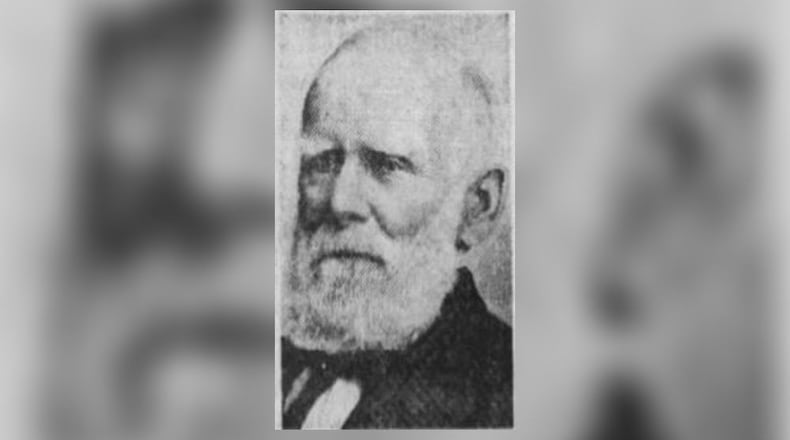As a boy in the little New Jersey town, Brown showed a fondness for anything mechanical or mathematical. He was a carpenter-contractor, having learned that trade in his younger years in New Jersey.
A 1935 Dayton Daily News article states that Brown was “determined to seek his fortune in the west and the launching of that determination (was shown) by walking all the way from Philadelphia to Lebanon, OH.” He worked around the village for awhile, moved to Xenia in 1825, and then, three years later, came to Dayton to make it his permanent home.
Shortly after arriving in Dayton, he became associated with the pioneer contractor of early days, Thomas Morrison, and under his personal direction some of the city’s most substantial business structures were built.
Brown bought the old Timothy Squires house high on a hill in east Dayton in 1840. A forest and fruit trees surrounded the house, which topped a 100-acre plot, all within the Dayton city limits. He named the house Pleasant Hill.
He was the first person in Dayton to use natural gas. The natural gas company had a pipe in front of his house, which he lit every evening.
His business continued to flourish. He increased his facilities for manufacturing brick in the large brickyard on the northern portion of his 100-acre tract of land and had many contracts for public and private buildings.
Credit: Mixed
Credit: Mixed
In 1848, he was elected a member of the first school board in the city. After his term ended he was elected as a member of the Ohio legislature. Later he was made director of Ohio prisons and then a trustee of public works of the state of Ohio.
That concluded his political service, and in 1868 he purchased an interest in the firm of S.N. Brown and Son, which was led by his son Samuel.
About the Author



